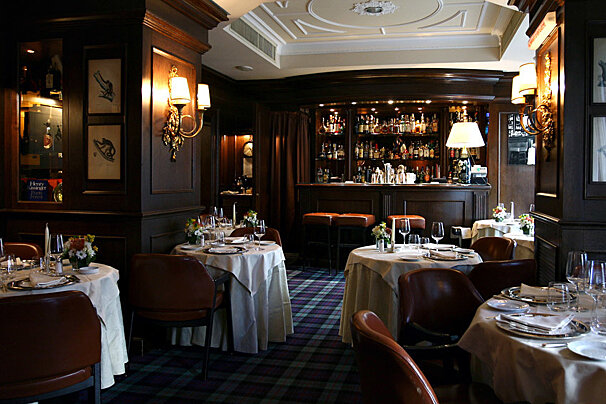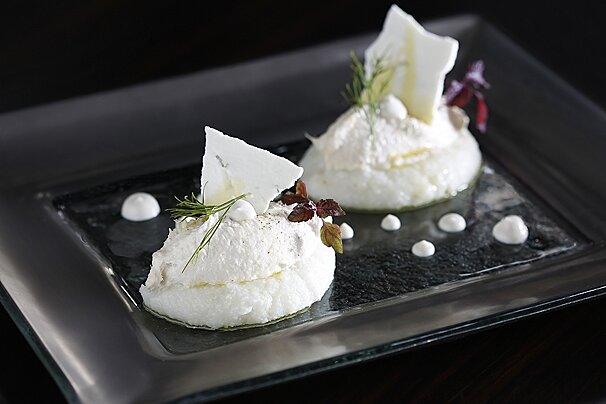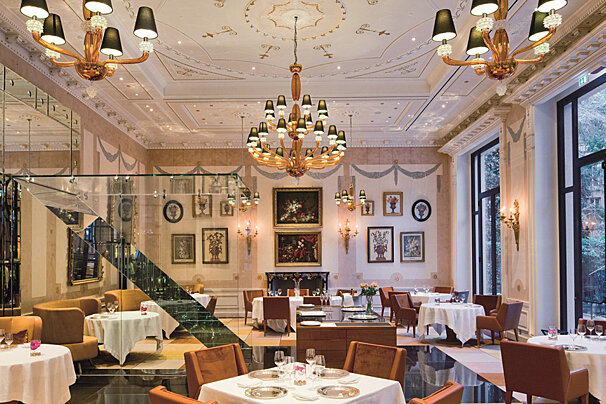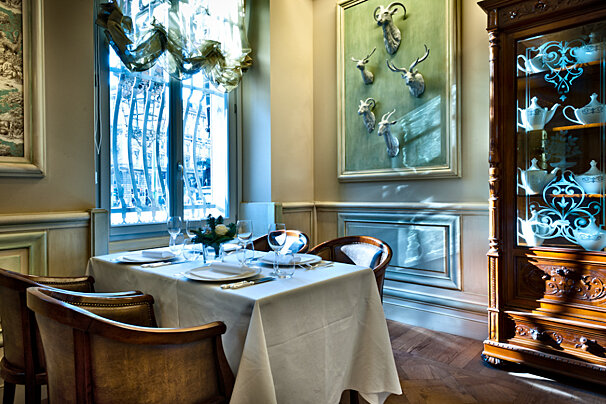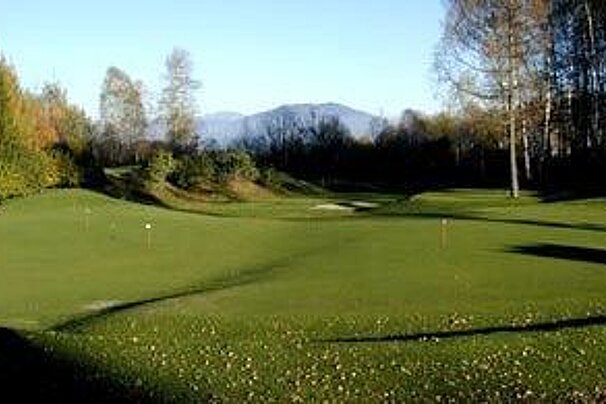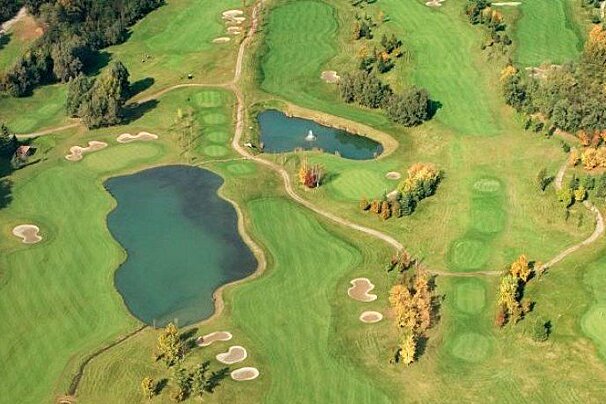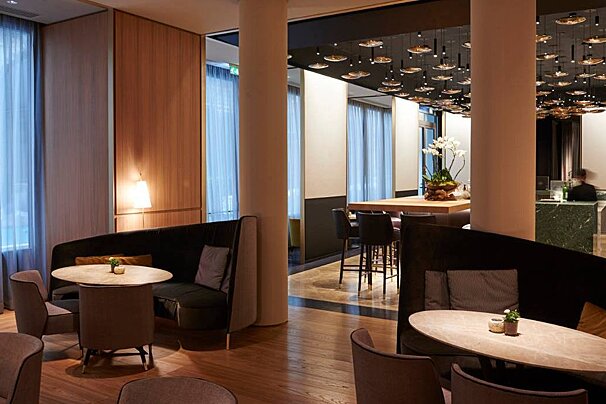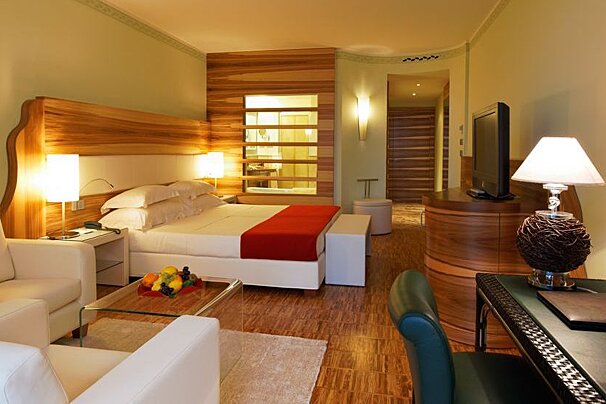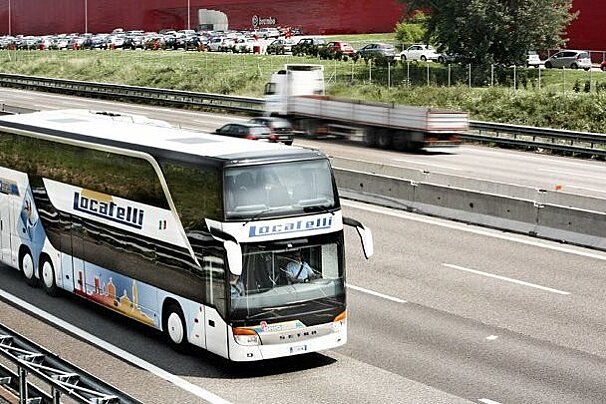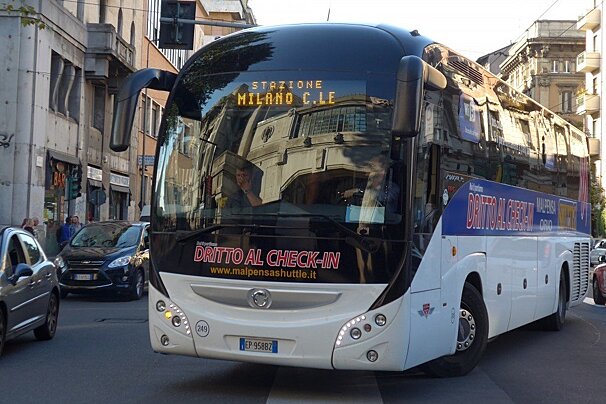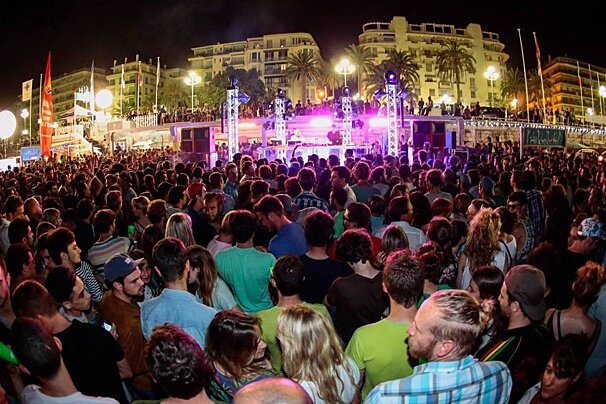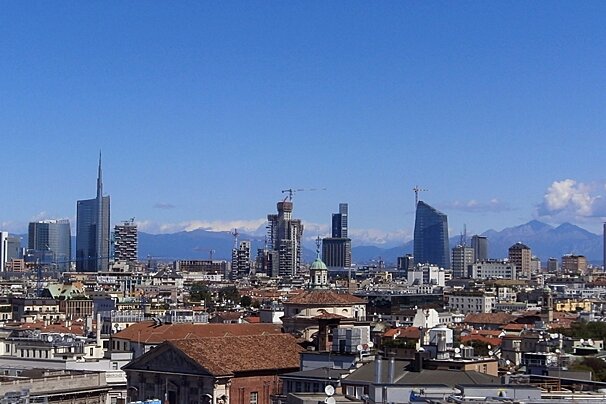Welcome to Milan
Discover Milan and why to visit
The city of Milan is Italy's business capital, home to a booming fashion and design industry. As well as a great place for shopping and people-watching, where you will be able to spot some the latest style trends, the city of Milan knows how to play. From some of the greatest restaurants in a country already well-known for its gastronomy to theatres, stadiums, museums and stunning monuments, there is something for everyone in Milan.
Its surroundings are equally beautiful. The glamorous and picturesque Italian Lakes - Maggiore, Como, Lugano, Iseo, Orta and Garda - are only within an hour and a half drive from Milan. The Alps are also close to Italy's second city, from which you can catch a glimpse of the snowy peaks glistening in the distance.
The city is divided into different neighbourhoods, each of them with their own personality and vibe. The most visited is the historic centre, around which the town has been built over the centuries. Its beating heart is the Duomo, a 600-year-old cathedral. Everything about this area is grand - the Piazza, the beautiful buildings including the Palazzo Reale and the modern twin buildings of the Arengario, the Teatro alla Scala and the Galleria Vittorio Emanuele shopping arcade - dedicated to the first King of Italy. The key streets giving this area its character include the busy Corso Vittorio Emanuele, Via G. Mazzini and Via Orefici.
The art and fashion district is located in the east and south-east part of Milan. This is the city's most exclusive neighbourhood, featuring high-end private art collections in San Babila. It is also home to Milan's fashion district, known as the Quadrilatero della Moda. Boutiques representing many of the world's major fashion houses line the sides of this Quadrilatero d'Oro (Golden Rectangle) made up of Via Montenapoleone, Via Manzoni, Via della Spiga and Corso Venezia. This is an intriguing area for people watching and window shopping.
Arguably, the most authentic, lively Milan can be found in the north-east. This artsy, bohemian district, which includes the Brera area, is a lively mix of upper class and blue collar. Situated just north of the Duomo and city centre, it is made up of narrow alleys filled with chic antique stores, galleries, cafes, bars and restaurants. It is also home to the Pinacoteca di Brera - one of Europe's finest art collections and the renowned fine arts academy. The narrow streets around the Brera Academy and the Corriere della Sera headquarters abound with intriguing boutiques, quirky exhibition spaces and trendy bars.
Art-enthusiasts must visit the Sant' Ambrogio district, in the north-west of Milan, named after its church dedicated to Saint Ambrose, the city's patron saint, and as a result the Milanese church most important to locals. The area is also home to one of the city's biggest tourist attractions - Leonardo da Vinci's painting of "The Last Supper". These are not, however, the only interesting features in this area, which is steeped in ancient history, distributed in a maze of alleys south of the district's main thoroughfare, Corso Magenta. It is also great for bargain shopping and chic bars.
Finally, the south-west is home to the romantic Navigli district, part of historic Milan and once linked by a network of canals ('navigli') similar to Venice. Dating back to the 13th century, the canals, partially designed by Leonardo da Vinci, allowed a network of trade routes to develop which helped establish the city as an important economic hub and, though landlocked, as a major port. Now only two major canals remain - Naviglio Pavese and Naviglio Grande, as well as a smaller canal, Darsena. They can be explored on foot or by boat, in an artsy neighbourhood dotted with art studios and mini-galleries, cafes and restaurants.
But the south-west is best known for its vibrant nightlife, especially at the square where the Colonne di San Lorenzo - among the best-preserved ruins in Milan - are located. This piazza is one of the vital places of the so-called Milanese 'movida' or nightlife. Here you will also find the Ticinese area, which attracts a youthful, exuberant crowd with pavements and trendy shops packed out during evenings and Saturday afternoons. The Porta Ticinese, which gives its name to the district, is a former city gate of Milan created using the Spanish walls of the city in the 16th century, though the gates were later replaced when the walls were pulled down.
Set against the foothills of the Alps, the Italian Lakes have something to offer anyone with an appreciation of nature and the fine things in life. The smaller of the lakes, Lake Iseo and Lake Orta, are almost forgotten in the touristic fame of the 'Big Three' - Lake Garda, Lake Como and Lake Maggiore - and Lake Lugano is considered mostly Swiss.
Lake Garda, the largest of the Italian lakes, located on the eastern edge of Lombardy, has the most Mediterranean climate and is well set up for family holidays. Lago d'Iseo is a great destination for escaping the crowds. Easily accessible for day trips, Lake Como is the closest to Milan. It is known as the most romantic of the lakes, its shores fringed by elegant villas and Romanesque villages with a backdrop of rugged limestone mountains. Lake Maggiore, the westernmost lake, and protruding largely into Switzerland, offers year round activities and is especially popular with outdoor enthusiasts. It is worth visiting the Borromean Archipelago off Maggiore's shores, islands known for their stately palazzos, lavish gardens and quaint fishing villages. Polezza, at the far eastern tip of Lake Lugano, is an intimate medieval town with a distinctly Italian flavour on a mostly Swiss Lake and is worth a stop off.
Sights & Attractions in [locality]
A rich cultural history has left many remarkable sights to explore with castles & ruins, cathedrals & monasteries, grand manor houses & gardens and a host of art galleries and museums.
Most of these monuments are located in the historic centre of Milan, which boasts internationally renowned landmarks such as the Duomo, the stunning Galleria Vittorio Emanuele II or ancient buildings like Sant'Ambrogio Basilica. Some of the best museums in the world can also be found in Italy's second city, including the Pinacoteca di Brera or the Biblioteca Ambrosiana. Milan is definitely a must-visit for all the culture vultures out there!
Sights in Milan
See all Sights & Sites-

Museo del Novecento Art Museum, Historic Centre of Milan
Located inside the Palazzo dell’Arengario, in Piazza del Duomo, this museum hosts a collection of over four thousand works that showcase the development of 20th-century Italian art.
-

Teatro alla Scala (La Scala Theatre), Milan - Centre
La Scala is one of the most important opera theatres in the globe, where many of the most famous operas were premiered. It now stages concerts, recitals and cultural events as well as ballet and opera.
-

Fabbrica del Vapore Gallery, Northwest Milan
Located at an old industrial facility, this multifunctional space is managed by Milan Town Council and open to all. It has a gallery exhibition space and offices of 200m2.
-

Galleria Blu, Milan - Centre
This gallery is the oldest in Milan, originally founded in 1957, and initially focussed on post-war avant-garde.
-

Galleria Pack, Southeast Milan
Opened in 2001, this beautiful gallery houses both Italian and international artwork, the well-established and the aspiring artist.
-

Santa Maria in Strada Church, Monza
Thus church takes its name from the road ('strada') that connected Monza and Milan. Formerly part of a Franciscan convent, the church was built in 1348 on the site of the monastery's old oratory.
Events in [locality]
Being one of the largest cities in Europe, Milan hosts some of the most important events in the continent. As Italy's fashion and design centre, Milan Fashion Week and the Triennale International Exhibition are among the most prestigious in the world. There are also frequent major art exhibitions and concerts, as well as sports competitions such as the Formula 1 Gran Premio de Italia in Monza.
Dining in [locality]
Restaurants in Milan
See all Restaurants-

Armani Restaurant, Milan - Centre
Part of the Armani Hotel Milan, this Michelin-starred restaurant takes a modern approach to classic Italian wining and dining. The stylish decor has been designed to the smallest detail by Giorgio Armani himself.
-

Il Baretto Restaurant, Milan - Centre
Il Baretto has been running for over fifty years, delighting the great and the good of the city for half a century. The sophisticated, old English club house decor is host to a refined menu taking cues from Milanese and international cuisine.
-

Seta Restaurant, Milan - Centre
The 2-Michelin-starred Seta restaurant located in the Mandarin Oriental Milan hotel is a new kid on the block for the Milanese restaurant scene. An open-plan kitchen gives guests a peak of how the stunning dishes are prepared and a more complete experience to their choices.
-

Terrazza Gallia Restaurant, Milan - Centre
Located at the luxury Excelsior Gallia Hotel, this rooftop restaurant boasts a menu created under the consultancy of three-Michelin starred chefs Enrico and Roberto Cerea and the Lebano brothers. They serve modern Italian cuisine with a focus on the Lombardy region.
-

Palazzo Parigi Restaurant, Milan - Centre
The elegant style and furnishings, the neoclassical pieces of art decorating the walls and the hand-painted high ceiling is a dramatic yet fitting setting for the fantastic food of the Palazzo Parigi restaurant. And when the weather is fine, the relaxed atmosphere of the private garden terrace provides an alternative atmosphere for visiting diners.
-

Rubacuori Restaurant, Milan - Centre
Michelin-starred experience that draws on the experimentation of the Venissa culinary approach. The enchanting decor completes the tone for dining in a very unique setting.
Things to do in [locality]
Things To Do in Milan
See all Activities & Trips-

Menaggio & Cadenabbia Golf Course, Lake Como
An Old England styled public golf course set prestigiously on the shores of Lake Como.
-

Swissminiatur
If you want to see an overview of Switzerland in miniature, then this is the place to come.
-

Iles Borromees Golf Course, Stresa
Golf Des Iles Borromées is an 18 hole course built in a natural and uncontaminated environment situated 500 metres above sea level. It has a southerly exposure, fresh in summer and sunny in winter, and from the 18th tee, you can often see the skyline of Milan and four lakes: Maggiore, Varese, Montae and Comabbio.
-

Monte Tamaro
Monte Tamaro rises 1,961 metres above the lake and in this beautiful hilly area there are plenty of wonderful trails and hikes. Notably it is the starting point for the Tamaro-Lema hike. This peak is also worth visiting for the contemporary and innovative Santa Maria degli Angeli church designed by Mario Botta and painted by Enzo Cucchi. It sits on the edge of the hillside with amazing views. There is also an adventure park and mountain bike trails. Something for everyone.
-

Milano Golf Course
This 18-hole course was built in 1928 in the historic Royal Park of Monza. The three paths of the course are set within an ancient wood, requiring the player to think carefully about each shot, with a focus on precision in the front 9 and long shots on the back 9.
-

Villa Paradiso Golf Course
This 18-hole, par 72, golf course was designed by Franco Piras and realised in 2002.
Nightlife in [locality]
Bars & Clubs in Milan
See all Bars & Clubs-

Mio Bar, Milan - Centre
Located in the historic centre of Milan, in front of the Galleria Vittorio Emanuele II, this is one of Milan’s hottest and trendiest bars in the city at any time of the day.
-

Plastic Nightclub
With a number of different dancefloors, and known for attracting classic 80s pop icons, this is a fashionable gay-friendly club with a selective crowd.
-

Mom Cafe Bar
A casual, all-welcoming cafe offering a lively, homely ambience, tasteful rock tunes and hearty fare. Although this cafe is brimming with customers at happy hour, tables are quick to vacate in good weather as locals spill out to the adjoining park.
-

Bobino Nightclub, Milan - Centre
Start your evening with a large aperitivo and a cocktail at the bar, and stay for the night's event - themed parties and renowned DJs.
-

Mimmo Milano Restaurant & Bar, Milan - Centre
Located inside the Dondup flagship store, this restaurant boasts a wonderful bohemian decor with light whitewashed wood, vintage furniture, lots of candles and linen tablecloths. They serve seasonal dishes based on traditional Italian cuisine.
-

Straf Bar, Milan - Centre
This upmarket bar offers cocktails and a light lunch menu to a typically well-dressed crowd, fatigued after shopping the Galleria. The bar is part of the arty-industrial Straf 'design' hotel.
Hotels in [locality]
There is a wide range of hotels to choose from in Milan, from glitzy 5 stars to budget chain 3 stars and comfy B&Bs.
Milan is Europe's capital of luxury, so it is no wonder that there is a large selection of high-end hotels to choose from. Design aficionados will find everything they are looking for in Milan, as some of the best interior designers and architects in the world have made their mark in the city renovating historic buildings to turn them into glamorous hotels. Even big names in fashion like Armani or Bulgari have opened their own luxury hotels in Milan. Even recognised international brands like Melia, Hyatt or Four Seasons have their own establishment in the centre of the city.
Hotels in Milan
See all Hotels-

Town House Galleria Milano Hotel
23 August 20257 NightsSuperbly located in the heart of Milan, inside the famous Galleria Vittorio Emanuele II, just few steps away from Duomo square, this hotel holds on to its history while providing world-class and design accommodations. The 58 rooms and suites with a stunning view inside the Galleria offer an intimate and elegant hideaway in the historical centre of Milan.
Price: €3,911
-

Excelsior Gallia Hotel, Milan - Centre
23 August 20257 NightsOriginally opened in 1932, the hotel has been completely renovated by renowned Milanese designer Marco Piva. An architectural jewel of Belle Époque grandeur, Piva has created an extraordinary new destination in the city of style.
Price: €2,661
-

Palazzo Parigi & Grand Spa Hotel, Milan - Centre
23 August 20257 NightsThe Palazzo Parigi hotel is in an ideal location on the northern edge of the Brera shopping district. The luxury decor of the hotel is an ode to Milanese style and history, and the many top-drawer services and facilities will want guests wanting for little else.
Price: €6,776
-

3Rooms Hotel
The famous Corso Como 10 opened this intimate hotel in 2003, offering just three modern suites.
-

Lefay Resort Hotel, Gargnano
23 August 20257 NightsLocated in Gargnano, one of the most picturesque villages on the lake, and situated inside a 11 hectares natural park in the heart of the spectacular and renowned “Riviera dei Limoni”, surrounded by gentle hills and natural terraces rich in olive trees and woods overlooking the lake.
Price: €5,207
-

Mandarin Oriental Hotel, Milan - Centre
A refined and sophisticated hotel housed in four 18th century buildings, the service and atmosphere is as expected from the international luxury hotelier group, Mandarin Oriental. A Michelin-starred restaurant and extensive luxury spa are the highlights.
How to get to [locality]
The city of Milan is located in northern Italy, close to the French and Swiss borders. Its location means it is no more than a two-hour flight from most European capitals, making it easily accessible for those in search of some high-quality cultural visits and shopping.
Transfers for Milan
See all Airport Transfers-

Orio Shuttle, Bergamo
This company offers coach airport transfers from Orio al Serio airport to Milan central station, Malpensa airport, Bergamo and Monza.
-

Malpensa Shuttle
Shuttle company offering regular services from Malpensa airport to Milan central train station via Milano Fiera, as well as to Milano Fiera Rho, Linate airport, Bergamo and Monza.

Directions
The easiest and quickest way to get to Milan is to fly. Malpensa airport is located 49 kilometres from central Milan, connected to the city with frequent trains, buses and a motorway. Airlines fly from all over Europe, as well as Asia, America and Africa throughout the year.
There is a second international airport in Milan, Linate. Only 7 kilometres eastwards from the city centre, it hosts frequent flights to European capitals such as Dublin, Berlin, Paris, Amsterdam, Brussels, Athens, London, Madrid, Vienna or Bucharest, as well as many domestic connections. Local Milan buses reach Linate airport.
Bergamo airport is also close to Milan, only 45 kilometres to the north-east. The third busiest airport in Italy, it has daily flights to cities in Europe, Africa and Asia. There are several public transportation links from Bergamo airport to and from central Milan, as well as to Bergamo, Brescia, Turin and Monza.
Travelling by train is also a great choice when visiting Milan. There are two main train stations in Milan: Milano Centrale and Porta Garibaldi. High-speed trains and regionals stop at both, with connections to European capitals such as Paris, Zurich and Vienna, as well as Italy's main cities and regions
You can also drive to Milan, entering the Italian peninsula from continental Europe via the tunnels that cross the Alps, or through coastal roads.



















